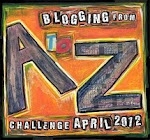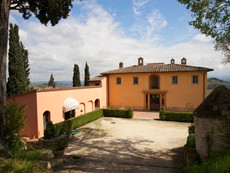Il Borghetto, Medieval Villa Restored in Tuscany
Frances Mayes and Marlena De Blasi did it. Michael Tucker and Jill Eikenberry did it. Phil Doran did it. Ann Cornelisen did it. Alice Leccese Powers tells of others who did it.
What do these people have in common?
Besides being writers, all these people lived in Tuscany or other parts of Italy, and many of them bought and renovated old villas or farmhouses.
And the Bimbi family (Sandra, Simona, Riccardo, and Nicola) did it, too. In 1999, they purchased Il Borghetto, one of nine farms of Pietrafitta located within sight of the medieval walled city of San Gimignano. The villa was in serious need of restoration, as you can see by the following pictures (used by permission of the Bimba family).
Pietrafitta and Il Borghetto lie between Florence and Siena in the Tuscany region of Northern Italy. The name Pietrafitta means “stone pressed into the ground,” indicating a tollgate marker or boundary line on the ancient Strada Chiantigiana, the road from Florence going south to Siena. The road is now SR222.
Over Pietrafitta and Il Borghetto’s long history, political, religious, and economic events intertwined, reflecting the historical upheavals of the times as Tuscany moved through the dark ages, medieval times, the Renaissance, and into modern times.
In early medieval Tuscany successive rounds of invaders from the North, Ostrogoths (405AD), Goths (552 AD), and Lombards (570 AD) claimed territory in Italy. The Pope called in Charlemagne, King of the Franks to rout the Lombards in 774 AD. Charlemagne drove them out and was crowned Holy Roman Emperor (800 AD) for his efforts. This started the power struggles between the pope and the emperor: Who will rule Italy? The emperor or the pope?
As if these external forces did not cause enough problems, Italy had a long, checkered history of internal power struggles, constant feuding, scandals, and broken treaties. Wars of revenge or conquest raged almost continuously between competing and often changing factions of popes and cardinals, emperors and kings, Ghibellines (supporters of the Holy Roman Empire) and the Guelphs (supporters of the pope), noble families, and in later times, the bourgeoisie (merchants, the rising middle class), plebeians (common people), and serfs (workers bound to their owners).
All of this resulted in instability in the region as major city-states (Florence, Lucca, Pisa, Venice, Parma, Milan, and others) fought against each other. To be on the wrong side of a conflict meant plunder, destruction of property, and often banishment or death. Even towns suffered the fate of complete destruction and mass forced exile. Bribery sometimes saved the towns as mercenaries preferred money to loyalty. These were not easy times by any means.
Eventually, after centuries of both external and internal power struggles, King Victor Emmanual II unified Italy in 1861, the first time it had been united since the 6th century just before the Holy Roman Empire began to disintegrate. Still, Italy had more tough problems to face with World War I, Mussolini, and World War II.
How did Pietrafitta and Il Borghetto fare through all of this history? In my next post, I will concentrate on the families that owned Il Borghetto over these chaotic centuries.
In the meantime, this is what Il Borghetto looks like today after restoration by the Bimbi family.

On the door mantle: PARVA SED APTA MIHI
“Small, but enough for me”
From 16th century poet, Ludovico Ariosto.

Carol, Inger, Chris at dinner at 8 pm on Il Borghetto’s covered patio after a long day of exploring Tuscany.
Just as the writers mentioned earlier discovered, restoring a villa is hard work, but the final results bring pride and satisfaction. Not really small or just enough, Il Borghetto is magnificent and inviting. Congratulations to the Bimbi family for a job well done. You can find Il Borghetto at www.ilborghettotuscanholidays.com. Plan to stay there on your next trip to Tuscany.
Read my next post to see how the previous owners of Pietrafitta and Il Borghetto fared through Italian history.
You can read more about Il Borghetto in modern times in my earlier post here.
YOUR TURN: Do you know other writers who have restored a villa or farmhouse? What other writers have focused on Italy in their writing?



































































